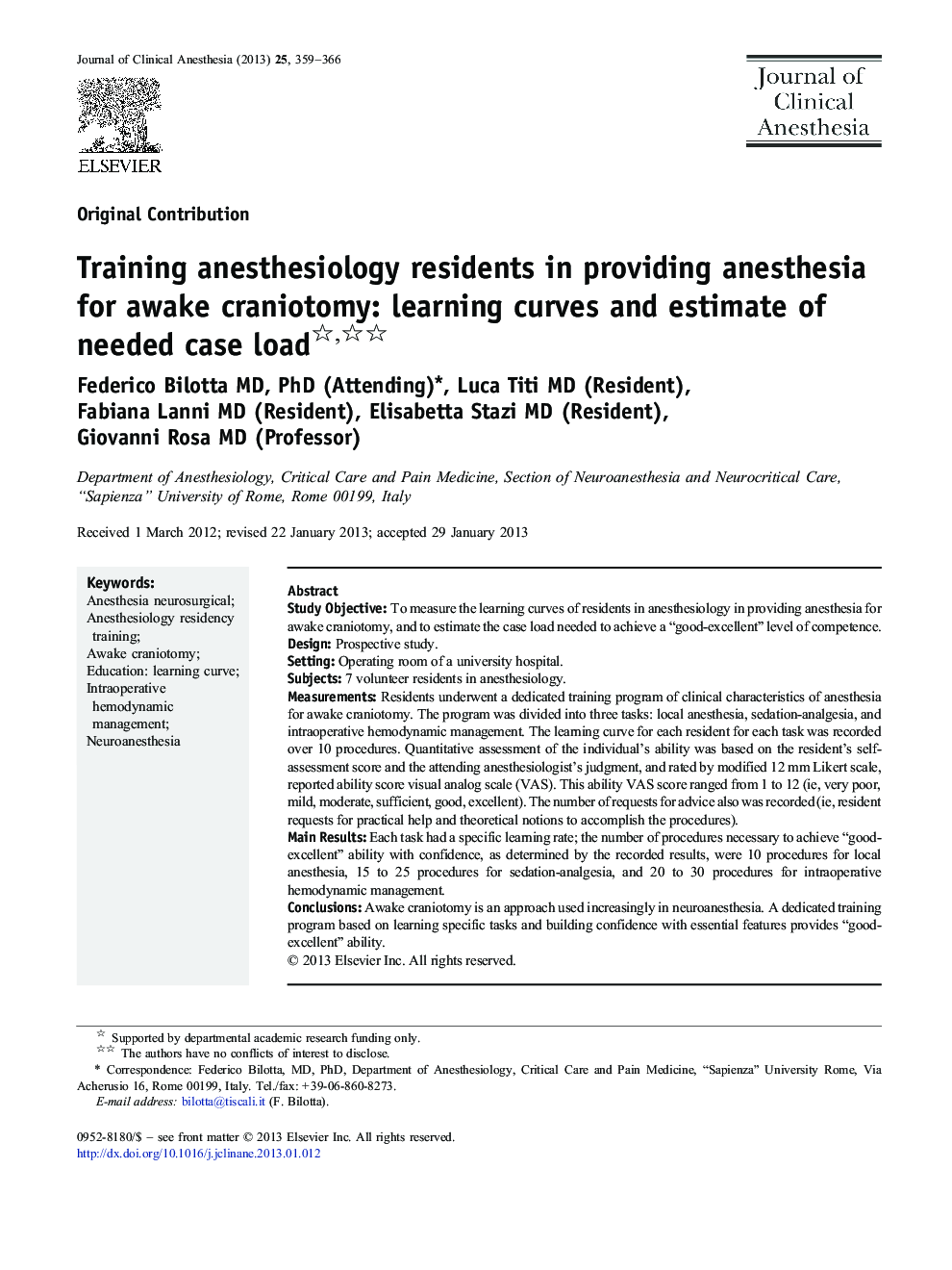| Article ID | Journal | Published Year | Pages | File Type |
|---|---|---|---|---|
| 2762823 | Journal of Clinical Anesthesia | 2013 | 8 Pages |
Study ObjectiveTo measure the learning curves of residents in anesthesiology in providing anesthesia for awake craniotomy, and to estimate the case load needed to achieve a “good-excellent” level of competence.DesignProspective study.SettingOperating room of a university hospital.Subjects7 volunteer residents in anesthesiology.MeasurementsResidents underwent a dedicated training program of clinical characteristics of anesthesia for awake craniotomy. The program was divided into three tasks: local anesthesia, sedation-analgesia, and intraoperative hemodynamic management. The learning curve for each resident for each task was recorded over 10 procedures. Quantitative assessment of the individual’s ability was based on the resident’s self-assessment score and the attending anesthesiologist’s judgment, and rated by modified 12 mm Likert scale, reported ability score visual analog scale (VAS). This ability VAS score ranged from 1 to 12 (ie, very poor, mild, moderate, sufficient, good, excellent). The number of requests for advice also was recorded (ie, resident requests for practical help and theoretical notions to accomplish the procedures).Main ResultsEach task had a specific learning rate; the number of procedures necessary to achieve “good-excellent” ability with confidence, as determined by the recorded results, were 10 procedures for local anesthesia, 15 to 25 procedures for sedation-analgesia, and 20 to 30 procedures for intraoperative hemodynamic management.ConclusionsAwake craniotomy is an approach used increasingly in neuroanesthesia. A dedicated training program based on learning specific tasks and building confidence with essential features provides “good-excellent” ability.
